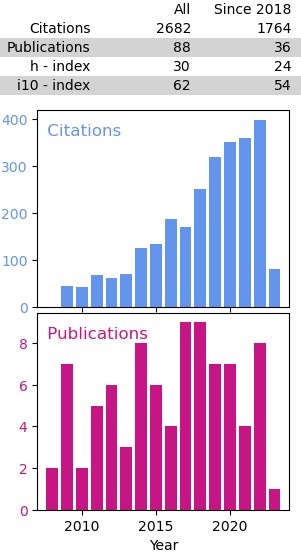About
I am an Independent Contractor working in Thunder Bay. I am an expert in statistical analysis and machine learning with a research focus in Space Weather and the dynamics of the magnetosphere during geomagnetic storms and substorms. As a contractor I provide expertise in research and analysis, project management, proposal development, and machine learning. Having worked in academia for over 20 years I have also developed a clear teaching philosophy that focuses on engaging students and developing vital soft and critical thinking skills.
Recent Work
Research: My new paper Understanding and Modeling the Dynamics of Storm-Time Atmospheric Neutral Density Using Random Forests highlights the importance of geomagnetic storms in the dynamics of atmospheric neutral density. The paper also provides a new machine learning model for predicting atmospheric neutral density using random forests. The new machine learning model can be found on GitHub and Zenodo. An example Jupyter notebook walks users through how derive model predictions.
Communication and Service: The Magnetosphere Online Seminar Series was established in response to the cancelation of several scientific meetings and to encourage continued interaction within the Space Physics community during the Covid-19 pandemic. The series hosts seminars on Zoom and YouTube live streams and watch previous seminars on the YouTube channel.
Projects: GMAG is a Python module providing the utility to download and load data from various ground-based magnetometer arrays in a Pandas DataFrame. The GMAG site provides an overview of the module, a few examples, details for each Array supported by the module, a map of magnetometer stations, and a searchable table of the geographic and geomagnetic coordinates of magnetometer stations in each array.
The most recent update of GMAG introduces a new module for deriving ground-based induced electric fields from magnetometer measurements. The the efield module provides routines to calculate the 1-D surface impedence and subsequently the induced electric field. Resistivity profiles for select stations are also provided along with a simple routine to read in these profiles. Additional profiles will be added soon.

